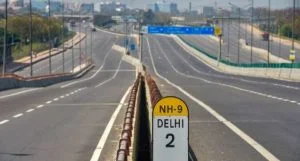
Iqra Yaseen
December 8, 2019 should be marked as global black day as this day reported the first official corona virus (COVID-19) affected person in China’s Wuhan province. Though a few researchers are of the notion that the primary case could be traced back to November 17 when a 55 year old individual from Hubei province of China confirmed to the COVID-19 symptoms but was not detected and if detected was not reported.
From that date until now, as on 26 march 2020, there has been exponential increase of this dreadful virus and has infected as an awful lot of over 5 lakh individuals globally (5, 20,485 to be specific) and killed over 20,000 men and women spread along 197 nations around the globe with china nonetheless topping the list. In India alone there had been officially recorded 722 COVID-19 affected humans with 16 deaths as on 26 March 2020.
In order to interrupt the chain, India announced 21 day nationwide lockdown on 24 March 2020 by placing 550 districts around 30 states/UTs in strict regulations. Such lockdowns have also been observed in different countries across the world however on a smaller scale as compared to that of India. As according to experts this lockdown will have an effect on non-critical offerings across 80 districts of India. All leaders across the globe have hailed the choice of lockdown, but can India’s economy endure the brunt of 21 day lockdown? The query desires an expeditious and gilt-edged explanation.
For me, this 21 day lockdown is like proverbial “Out of frying pan into the fireplace” for India’s financial system. Andy Mukherjee, a Bloomberg Opinion columnist, considers India’s economy to be the worst in previous 42 years. HDFC Bank chief, Aditya Puri, commenting on the condition of India’s financial health has rightly stated that “India’s economic system is in ICU”.
While Moody’s predict normal economic activities of India to resume in April-June quarter this year, but the health specialists of India are of different view. Before the outbreak of this pandemic India’ economic system was anticipated to develop at 6.6% as in step with Moody’s, but the outbreak has forced the scores of corporations to rethink about their preceding estimates. The Moody has slashed the India’s boom by way of 1.2% and got up with a new estimate of 5.4% for year 2020 and 5.8% for the year 2021. On the other hand other rating company, S&P, has also slashed India’s economy boom from 5.7% to 5.2%. At the national front, RBI-the central bank of India, has additionally decreased its forecast for India’s growth to 5%, less than that of Moody’s and S&P. As consistent with any other evaluation, this 21 day lockdown will cost India at $120 billion or 4% of the GDP.
4% GDP loss for a crippling economic system with growing population and with 17% citizens living underneath poverty line, I worry, may prove to be an economic epidemic, as specialists name it, for India. A loss in terms of GDP additionally means a decrease in per capita income of Indian citizens. This sheer cut in per capita earnings may be so grave that the earn hand to mouth “can also starve to death”, writes Swati Narayan, an individual blogger. Not only this, it is able to additionally cause heightened unemployment rates, layoffs, company lockdowns, bank crashes and much more.
From the onset of this pandemic, many meantime policies have been framed by governments around the globe. United States, by far the richest economy within the international system, announced $2 trillion of investment for the health corporations, cut interest rates to almost 0%, and framed a few different legislative legal guidelines. China, the epicentre of this pandemic, announced a big monetary package deal of $15.93 billion and identified the maximum vulnerable households and enterprise firms to back them financially. Other countries have likewise announced economic programs to mitigate the effect of COVID-19 on their economies.
In India the obligation to mitigate the financial repercussions of 21 day long lockdown lies on the shoulders of the RBI and MoF-GoI. Diverse steps have already been taken like extending GST return deadline to June 30 this year, free of charge withdrawals from bank ATMs for 3 months and postponing minimum balance requirement in bank accounts. The Prime Minister of India also proposed emergency COVID-19 fund for SAARC countries and got apt reaction. The Finance Minister of India announced a relief package of Rs 1.70 lakh crore on 26 March 2020 to assist government combat the outbreak. The objective of the bundle, as according to her, is to guard the most susceptible i.e. the underprivileged like migrant employees, day by day salary labourers, farmers, widows and so forth from the effect of this outbreak. Even as a few applauded the decision, more criticised it for the cause of announcing a meagre amount of package deal, 0.83% of GDP, to tackle an abyss scenario like this. For me this bundle is just like the first Aid treatment to the ailing Indian economic system.

There’ll be no second idea that the most affected people of this 21 day lockdown are those who earn from hand to mouth and who by no means are aware from where the next meal will come from. Thus the ‘First Aid’ treatment is in reality no longer enough to disentangle the India’s crippling economic system and wonders couldn’t be predicted out of this bundle. The MoF-GoI, at the side of RBI, need to promulgate a more decisive and comprehensive financial package to keep the economy from going into a ‘financial epidemic’.
Banking sector must be the top objective of this financial package. The contribution of the banking sector is around 8% to GDP. Furthermore India’s banking device is chiefly responsible for the mobility of capital within the country. So RBI desires an expeditious monetary policy to mitigate each viable impact of 21 day lockdown on its banking sector. Other purpose for the privileged sympathy toward the Indian banks is their overburdened NPAs. RBI has already announced Open Market Operations by way of offering to purchase Rs. 30,000 crore government securities on 20 March 2020. However that is not sufficient. More needs to be done and that too urgently.
First of all, RBI ought to decrease the diverse varying reserve ratios like cash Reserve Ratio and Statutory Liquidity Ratio, a good way to improve the liquidity position of banks. Leaving banks with much less coins in these instances will simply add fuel to the fire. Economic system need to keep running. A crawling economy is always useless and ineffective. So a slight cut in bank rate is another requirement at this time of crisis. Credit creation by way of banks need to be all time high to combat the serious monetary consequences of 21 day lockdown. Different countries have already taken the breakthrough and now it’s the time for India to step out for its own good and advantage.
Turning to other vulnerable sectors of Indian economic system, MoF-GoI must straight away announce tax reliefs to the specific sectors which may meet the shortage of cash. Budget should be issued to S&ME so that they will no longer run out of coins. Non-crucial /luxuries could be taxed heavily to substitute the subsidised essential and vital goods.
Large corporates and business tycoons also need to be available at the forefront and take the duty to keep economy running as part of their CSR regulations. Rajiv Bajaj, MD of Bajaj Auto has given proof of being an responsible businessman and a frontrunner via pledging no activity cuts or pay cuts at Bajaj. “If there is a sacrifice, it will start at the top. I will say no salary for me, before one person is let go” said Rajiv Bajaj in a TV interview. Rajiv Bajaj has set a benchmark and other business enterprises need to follow to take India’s economic system out of gulch to broadways.
Author can be reached at: iqrayaseen.scholar@kashmiruniversity.net
Follow this link to join our WhatsApp group: Join Now
Be Part of Quality Journalism |
Quality journalism takes a lot of time, money and hard work to produce and despite all the hardships we still do it. Our reporters and editors are working overtime in Kashmir and beyond to cover what you care about, break big stories, and expose injustices that can change lives. Today more people are reading Kashmir Observer than ever, but only a handful are paying while advertising revenues are falling fast. |
| ACT NOW |
| MONTHLY | Rs 100 | |
| YEARLY | Rs 1000 | |
| LIFETIME | Rs 10000 | |











